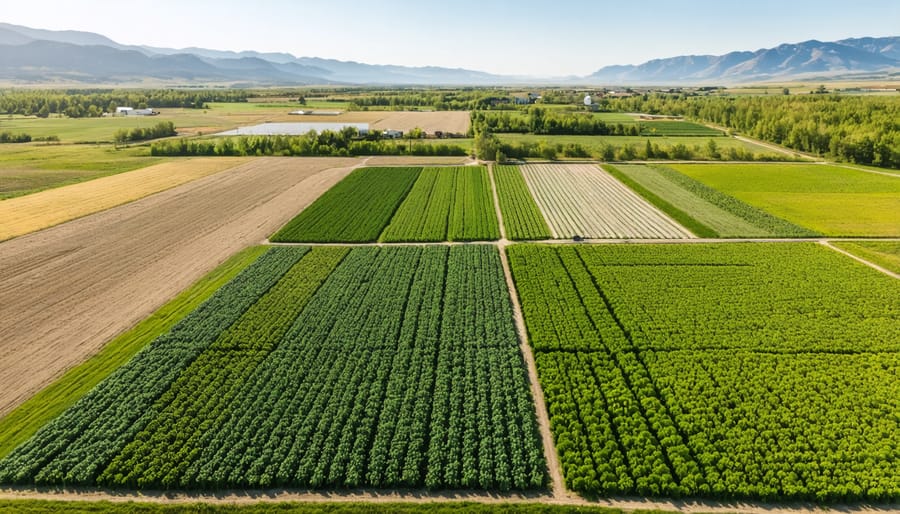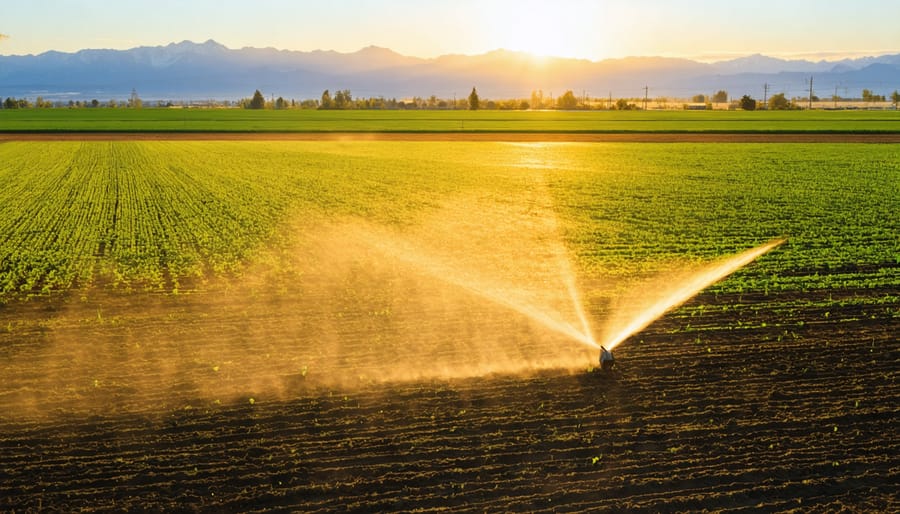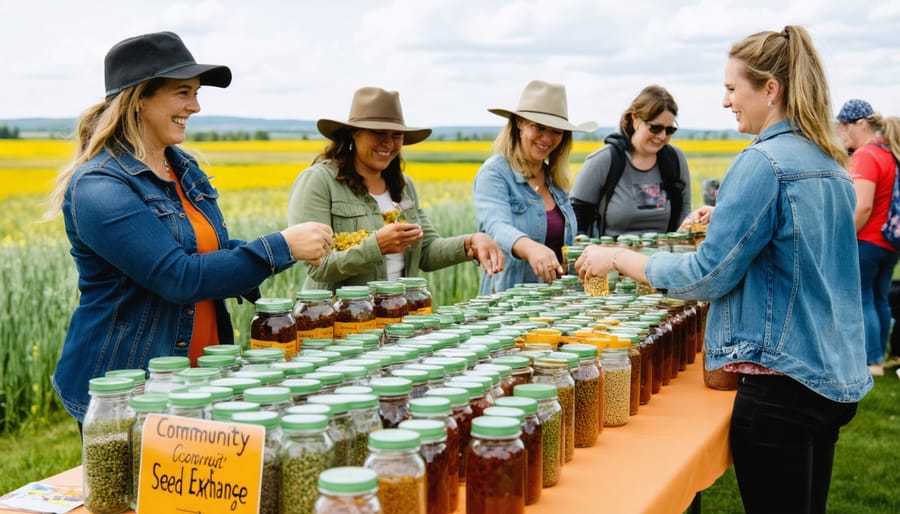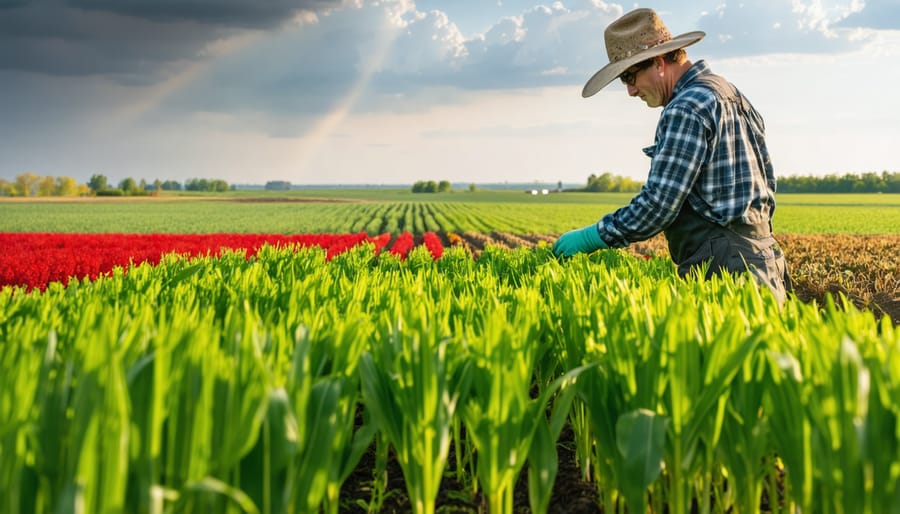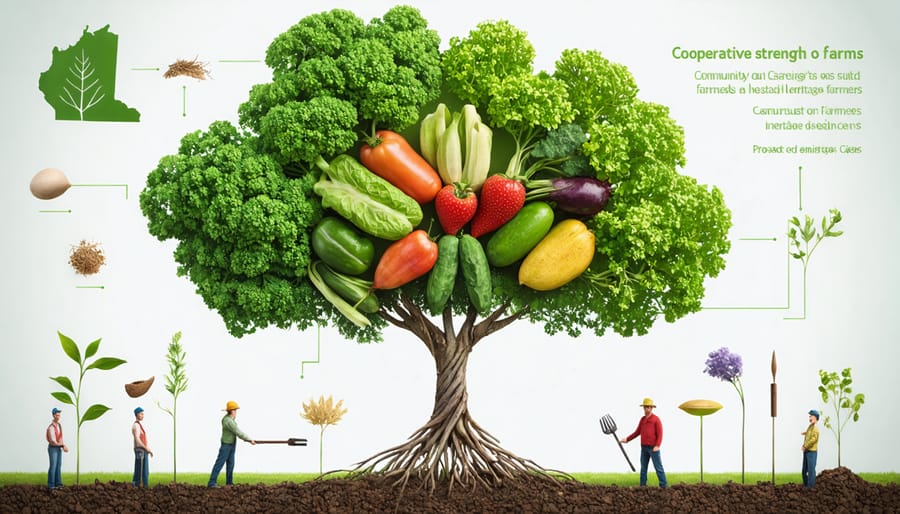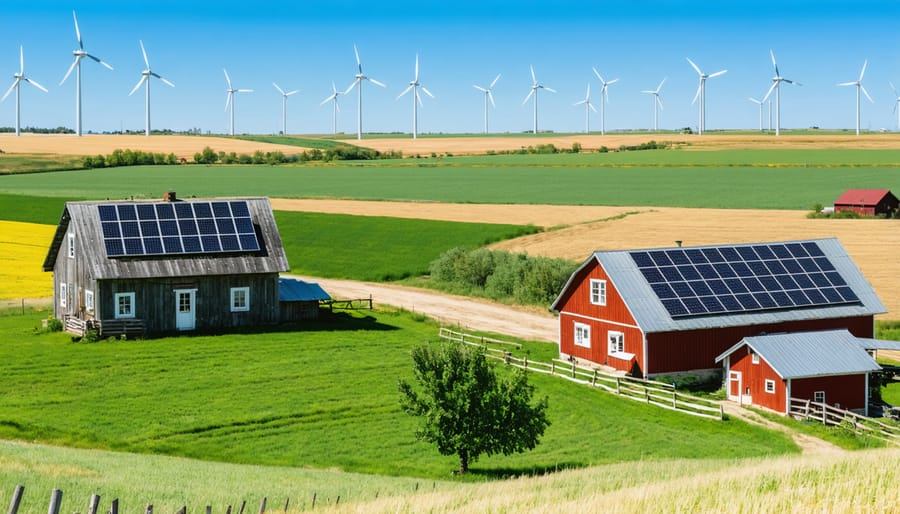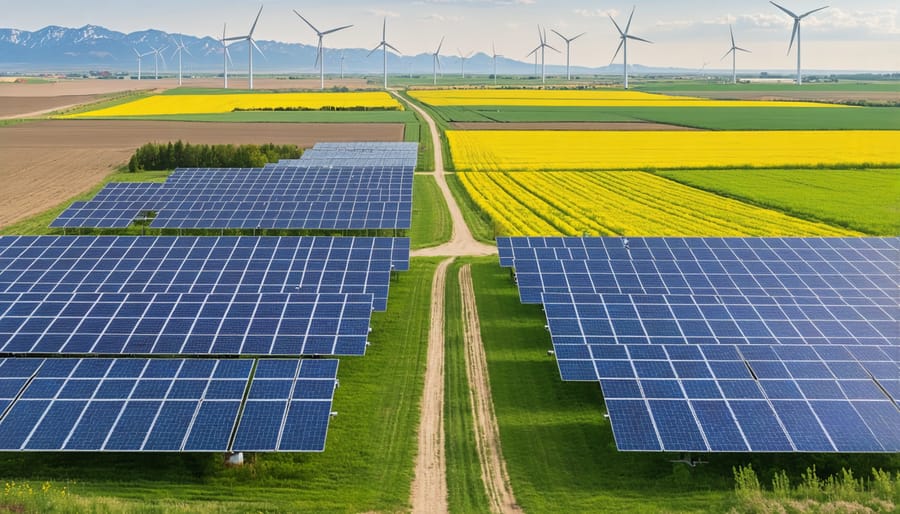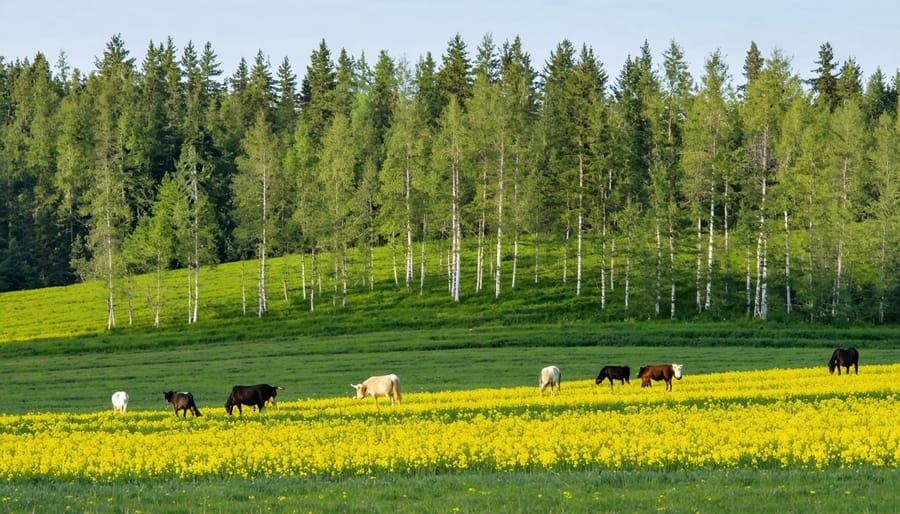Organic farm investment in Canada represents a pivotal shift in agricultural economics, with returns averaging 15-20% higher than conventional farming operations across Alberta and British Columbia. The surging demand for organic products, growing at 8.7% annually, has transformed small-scale organic farms into compelling investment opportunities backed by federal sustainability initiatives and provincial grants. Through strategic partnerships between established organic producers and innovative investors, the sector has matured from a niche market into a robust $6.5 billion industry. Alberta’s organic farming landscape particularly stands out, offering investors unique advantages through its established distribution networks, favorable climate conditions, and comprehensive certification support systems. As global food security concerns intensify and consumer preferences continue shifting toward sustainable agriculture, organic farm investments deliver both significant financial returns and meaningful environmental impact. This convergence of profitability and sustainability creates an ideal entry point for investors seeking to capitalize on Canada’s rapidly expanding organic agriculture sector while contributing to the nation’s food sovereignty goals.
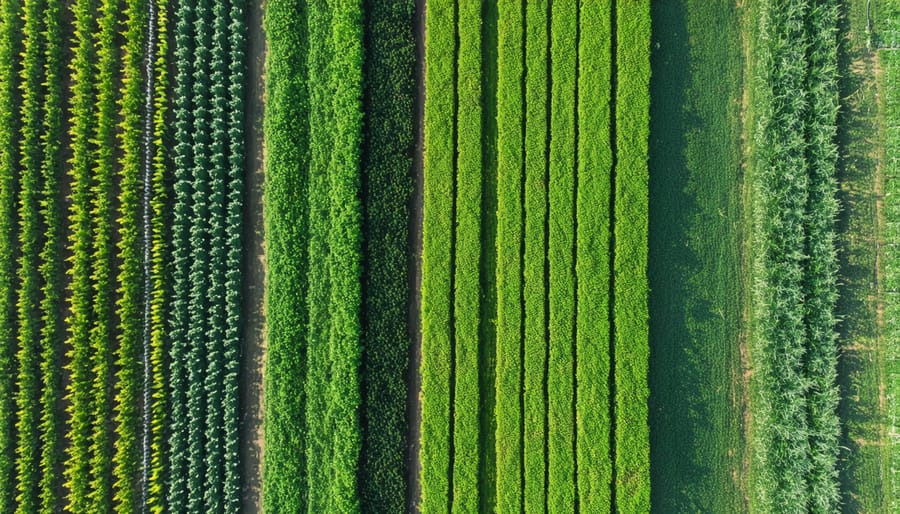
The Growing Value of Canadian Organic Investments
Market Demand and Growth Projections
The Canadian organic market continues to demonstrate remarkable growth, with retail sales reaching $6.9 billion in 2022, marking a 19% increase from 2020. Alberta’s organic sector particularly shows strong momentum, with local demand outpacing current supply. Market research indicates that 66% of Canadian consumers now purchase organic products weekly, with millennials leading consumption patterns.
Industry analysts project the national organic market to reach $10 billion by 2026, driven by increasing health consciousness and environmental awareness. Export opportunities are especially promising, with Canadian organic products commanding premium prices in key markets like the United States, European Union, and Asia.
Fresh produce remains the strongest category, representing 40% of organic sales, followed by dairy at 20% and grain products at 15%. The demand for organic meat and poultry has shown particularly strong growth, with an annual increase of 25% in the past two years.
Local farmers’ markets and direct-to-consumer sales channels have experienced significant growth, with a 45% increase in organic vendor participation since 2019. This trend suggests strong opportunities for small and medium-scale organic operations, particularly those within 200 kilometers of major urban centers.
Return on Investment Metrics
Recent data from Alberta’s organic farming sector reveals compelling returns on investment that continue to attract both established farmers and newcomers. A 2023 study of 50 certified organic farms in central Alberta showed average net returns of $385 per acre for diversified operations, significantly higher than conventional farming’s average of $225 per acre.
Successful organic farms consistently demonstrate strong profit margins, particularly in high-value crops like quinoa and hemp. For example, the Thomson Family Farm near Red Deer achieved a remarkable 42% return on investment within their third year of organic operation through strategic crop rotation and value-added processing.
Research from the Prairie Organic Development Fund indicates that farms achieving financial success in organic farming typically see full return on initial investments within 4-6 years. Key performance indicators from successful operations show average gross margins of 35-45% for mixed farming operations, with specialty crop producers reporting margins up to 60%.
These returns factor in initial certification costs, equipment modifications, and the three-year transition period. Notably, farms implementing regenerative practices alongside organic certification report additional cost savings of 15-20% in soil amendments and pest management over five years.
Investment Options in Alberta’s Organic Sector
Direct Farm Ownership
Purchasing an organic farm requires careful planning and consideration of several key factors. As interest in organic transition in Alberta continues to grow, many aspiring farmers are exploring direct ownership options. Start by assessing soil quality, water access, and existing infrastructure. Most successful organic operations require between 40 and 160 hectares, depending on your farming strategy and target market.
When evaluating potential properties, consider proximity to markets, processing facilities, and transportation routes. Certified organic land typically commands a 20-30% premium over conventional farmland, but often comes with established organic certification, reducing transition time and costs. Work with a realtor who specializes in agricultural properties and understands organic certification requirements.
Secure financing through Farm Credit Canada or other agricultural lenders who offer specialized programs for organic ventures. Remember to budget for additional costs like soil amendments, equipment modifications, and certification fees. Many new organic farm owners find success by starting with a smaller acreage and expanding gradually as they build experience and market presence.
Partnership Models
Investing in organic farming offers several partnership models that align with different investment goals and involvement levels. The most common structure is the Limited Partnership model, where investors provide capital while experienced farmers manage daily operations. This arrangement is particularly popular in Alberta, offering investors passive income while supporting local agriculture.
Joint Ventures present another viable option, allowing both parties to contribute specific assets – investors typically provide land or equipment while farmers contribute expertise and labor. This model creates a balanced risk-sharing arrangement that benefits both parties.
Crop-sharing agreements have gained traction among Canadian organic farmers, where investors receive a percentage of annual yields rather than fixed returns. This model aligns well with seasonal variations and market fluctuations, creating a more dynamic investment structure.
For those seeking more involvement, Co-operative ownership models enable multiple stakeholders to pool resources and share decision-making responsibilities. Many successful organic farms in Alberta operate under this structure, fostering community engagement and sustainable growth.
Lease-to-own arrangements offer a pathway for new farmers to gradually acquire farm ownership while providing investors with steady returns and eventual exit options. This model helps address succession planning challenges in Canadian agriculture while creating opportunities for the next generation of organic farmers.
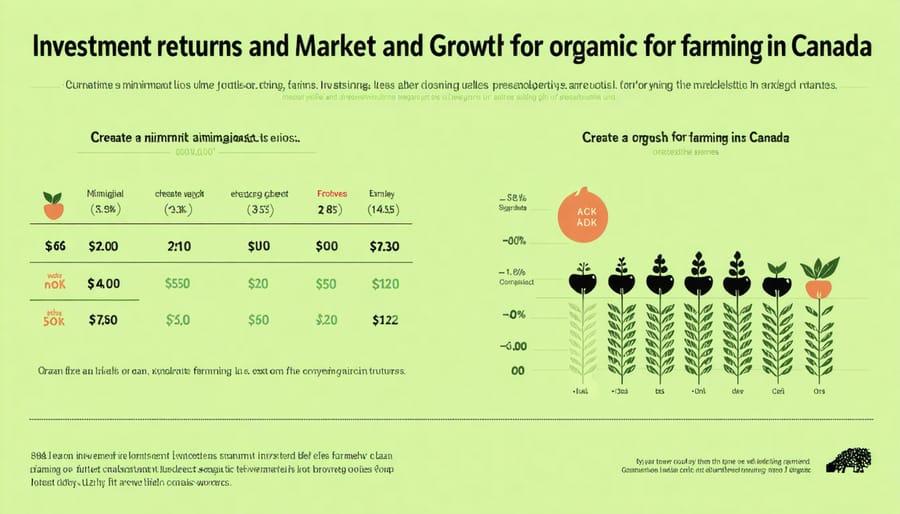
Equipment and Infrastructure Investment
Investing in proper equipment and infrastructure is crucial for establishing a successful organic farm operation. Essential equipment investments typically include a reliable tractor ($45,000-75,000), specialized tillage implements ($15,000-25,000), and precision seeding equipment ($20,000-35,000). For Alberta farmers, cold-storage facilities are particularly important, with basic units starting at $30,000.
Processing and handling facilities represent another significant investment area. A modest wash-pack facility can cost between $50,000-100,000, but it’s essential for maintaining produce quality and meeting food safety standards. Consider starting with mobile solutions like portable washing stations and coolers, which offer flexibility while you scale operations.
Smart infrastructure planning should include season-extension structures like high tunnels ($8,000-15,000 each) and greenhouse facilities ($25,000-50,000), which can significantly extend your growing season in Alberta’s climate. Water management systems, including irrigation equipment and water storage solutions, typically require $15,000-30,000 in initial investment.
Many Alberta farmers have found success by phasing their equipment purchases over 3-5 years, often starting with essential implements and gradually expanding as revenue increases. Equipment sharing cooperatives and used equipment markets can help reduce initial costs while maintaining quality standards.
Government Support and Incentives
Federal Programs
The Government of Canada offers several key assistance programs for organic farmers through Agriculture and Agri-Food Canada (AAFC). The Canadian Agricultural Partnership (CAP) provides substantial funding opportunities, with specific allocations for organic transition and certification costs. Farmers can access up to $10,000 for organic certification expenses and additional funds for infrastructure development.
Notable federal initiatives include the AgriInnovate program, which offers funding for innovative organic farming projects, and the AgriStability program, providing income support during challenging years. The Canada Organic Trade Association also collaborates with federal agencies to deliver targeted support for organic market development.
For new organic farmers, the Canadian Agricultural Loans Act (CALA) program provides guaranteed loans of up to $500,000 for land purchases and equipment. The Agricultural Clean Technology Program offers grants covering up to 50% of costs for sustainable farming technologies, particularly beneficial for organic operations.
These federal programs often work in conjunction with provincial initiatives, creating a comprehensive support network. Farmers should note that many programs require detailed business plans and environmental assessments. Working with local agricultural extension offices can help navigate the application process and maximize funding opportunities.
Alberta-Specific Initiatives
Alberta’s organic farming sector benefits from several provincial initiatives designed to support sustainable agriculture. The Alberta Farm Loan Program offers organic farmers access to low-interest loans up to $500,000 for land acquisition and infrastructure development. Complementing this, the Canadian Agricultural Partnership (CAP) in Alberta provides cost-sharing grants covering up to 50% of expenses for organic certification and transition periods.
The Organic Alberta organization facilitates mentorship programs connecting experienced organic farmers with newcomers, while offering specialized workshops on soil health management and sustainable farming practices. Their regional networks provide invaluable support for knowledge sharing and equipment cooperation.
Local municipalities across Alberta have implemented tax incentives for certified organic operations, particularly in counties surrounding Edmonton and Calgary. The Growing Forward 3 initiative specifically targets organic producers with funding for innovative technologies and sustainable water management systems.
The Environmental Stewardship and Climate Change Producer Program offers grants up to $100,000 for implementing climate-smart agricultural practices, with organic farmers receiving priority consideration. Additionally, the Alberta Organic Producer Association provides marketing support and helps connect farmers with local food distribution networks.
Through collaboration with agricultural research stations at Lethbridge and Lacombe, Alberta organic farmers can participate in field trials and access cutting-edge research on regenerative farming methods suitable for the province’s unique climate conditions.
Risk Management and Success Strategies
Environmental Risk Assessment
Environmental risks in organic farming require careful assessment and proactive management to protect your investment. In Alberta’s diverse climate, key considerations include extreme weather events, soil erosion, and pest pressures. Recent data from Agriculture and Agri-Food Canada shows that organic farms implementing comprehensive risk assessment strategies are 40% more resilient to environmental challenges.
Start by conducting a thorough soil analysis to understand your land’s characteristics and vulnerabilities. This should include testing for organic matter content, nutrient levels, and soil structure. Many successful Alberta organic farmers maintain detailed soil health records and participate in the Environmental Farm Plan program, which provides valuable guidance for risk mitigation.
Water management presents another crucial consideration. Develop irrigation and drainage plans that account for both drought and excess moisture scenarios. Installing soil moisture monitors and weather stations can help you make informed decisions about water management throughout the growing season.
Consider implementing buffer zones and windbreaks to protect against soil erosion and create beneficial insect habitats. These natural barriers also help maintain organic certification requirements by reducing the risk of contamination from neighbouring conventional farms.
Climate change impacts require special attention. Work with local agricultural extension services to understand regional climate projections and adapt your crop selection and rotation patterns accordingly. Many Alberta organic farmers are finding success with drought-resistant heritage grain varieties and diversified crop planning to spread risk across multiple growing seasons.
Remember that environmental risk assessment is an ongoing process that should be reviewed and updated annually based on changing conditions and new information.
Building Strong Farm Networks
Success in organic farming extends far beyond individual operations. Building strong farming communities has proven essential for sustainable growth and long-term prosperity in Alberta’s organic sector.
Successful organic farmers consistently emphasize the value of connecting with fellow producers through local agricultural associations, mentorship programs, and knowledge-sharing networks. These connections provide practical benefits like equipment sharing, bulk purchasing power, and collaborative marketing opportunities. The Alberta Organic Producers Association, for example, helps members access shared resources and marketing channels while fostering valuable peer-to-peer learning.
Digital platforms and social media groups have also become vital tools for organic farmers to connect, share experiences, and solve common challenges. Regular farmer-to-farmer meetings, field days, and workshops create opportunities for hands-on learning and relationship building. These events often lead to lasting partnerships and mutual support systems that help farmers weather challenging times and celebrate successes together.
Consider joining or establishing a local organic farming cooperative. These organizations can provide collective bargaining power for supplies, shared storage facilities, and enhanced market access. Many successful Alberta organic farmers attribute their growth to the strong networks they’ve built within their communities, proving that collaboration often yields better results than competition in the organic farming sector.
Investing in organic farming represents a significant opportunity for both environmental stewardship and financial growth in Alberta’s agricultural sector. Throughout this guide, we’ve explored the essential aspects of organic farm investment, from market analysis to practical implementation strategies.
The key takeaways emphasize the importance of thorough planning, sustainable practices, and strategic financial management. With organic food demand consistently rising across Canada, particularly in urban markets, the timing for investment in this sector remains favorable. Remember that successful organic farm investments typically require a 3-5 year timeline for full certification and optimal returns.
For those ready to take the next step, consider these action items:
– Schedule consultations with local organic farming mentors
– Contact Alberta Organic Producers Association for certification guidance
– Review available government grants and funding programs
– Develop a detailed business plan incorporating organic transition costs
– Connect with established organic farmers in your region
– Attend organic farming workshops and seminars
The path to organic farm investment may seem complex, but the resources and support available in Alberta make it an achievable goal. Whether you’re a conventional farmer looking to transition or an investor seeking sustainable opportunities, the organic farming community welcomes your participation in building a more sustainable agricultural future.
Remember, successful organic farming isn’t just about certification – it’s about building resilient systems that benefit both the environment and your bottom line. Start small, learn continuously, and grow sustainably.

